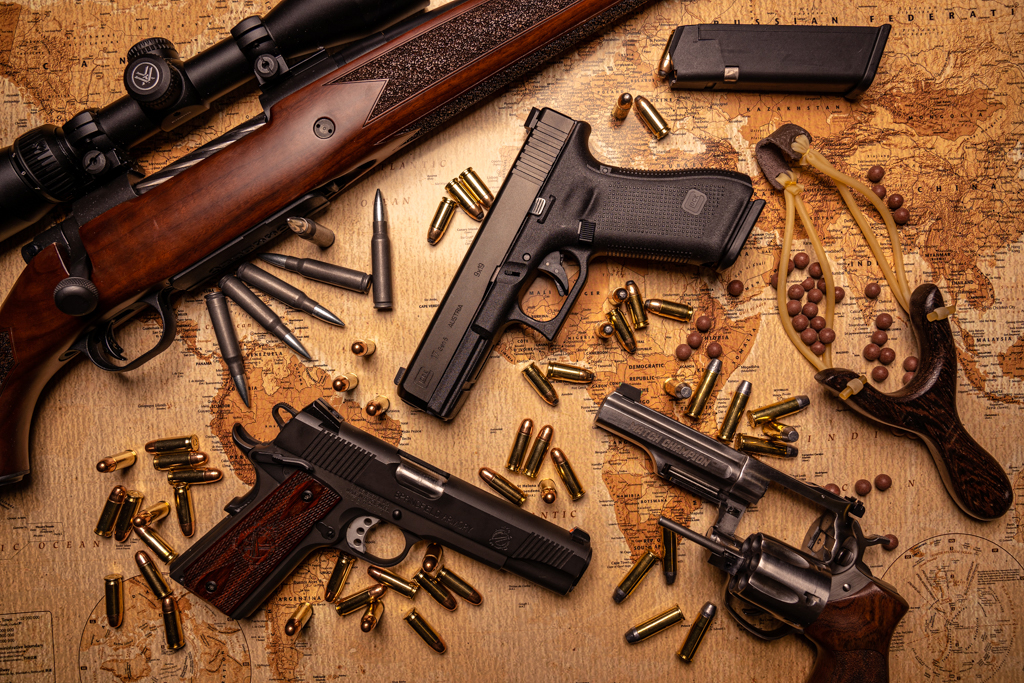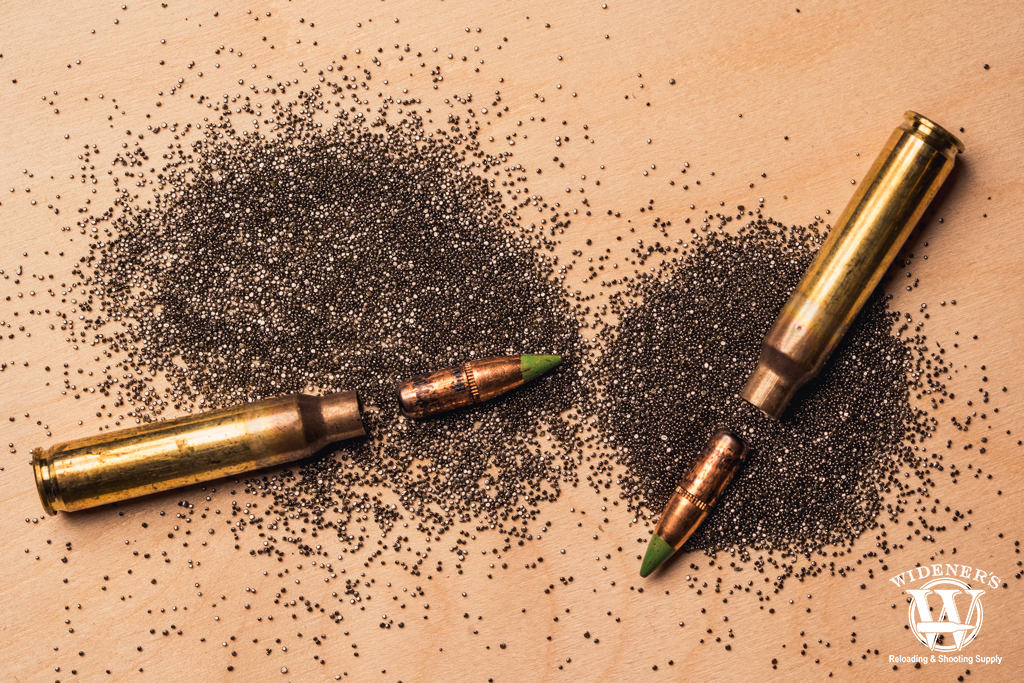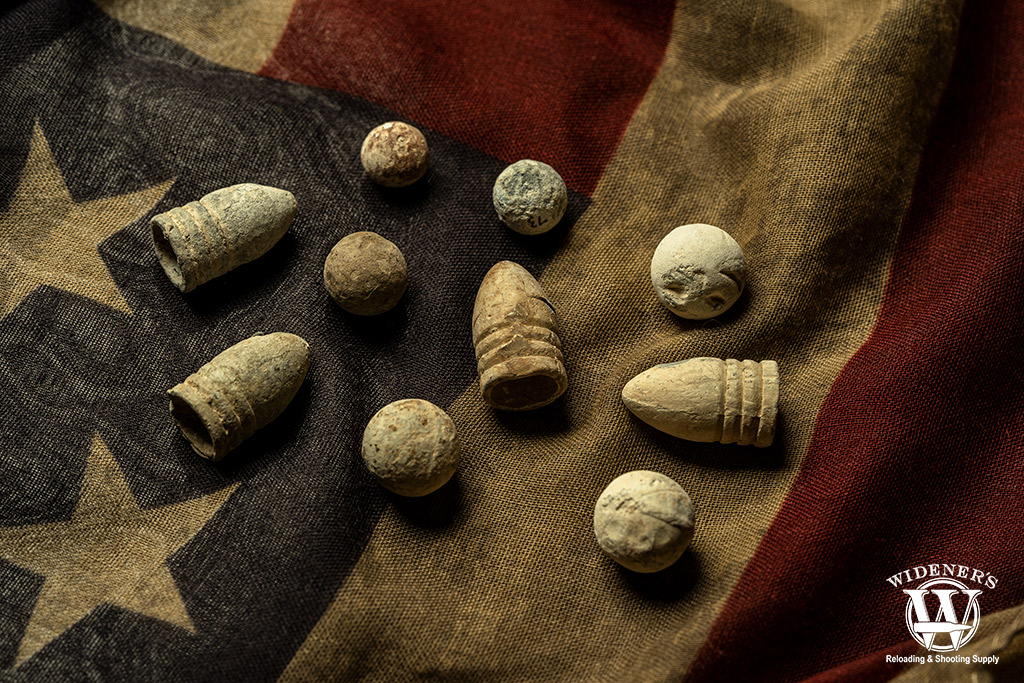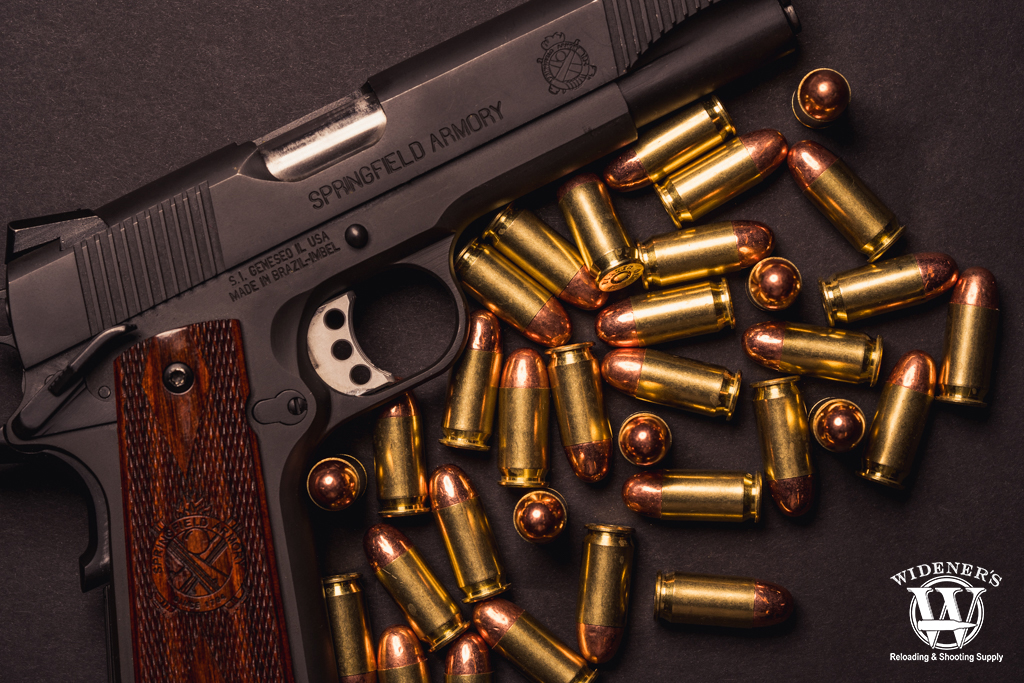

There is no record of the first projectile used by early man, although the odds are good it was a rock lobbed by a hungry caveman. Those humble beginnings lead to the creation of the shepherd’s sling. A leather pouch with two leather thongs attached to either side that increased velocity and accuracy—and many more devices of various sizes and effectiveness. Then someone in China invented gunpowder, firearms followed, and the bullet was born. Today’s versions are eloquent products of science, although their roots trace back to those first, round balls cast from molten lead. Here’s a look at the history of ammo and the modern bullet‘s evolution.
In The Begining, There Was Gunpowder

Big bang theory? Chinese gunpowder recipes existed as early as the 11th century Song Dynasty.
Sometime in the 9th century A.D., the Chinese invented blackpowder. It was the earliest known chemical explosive, consisting of a mixture in which charcoal and sulfur provide fuel, while potassium nitrate (AKA saltpeter) acted as oxidizer.
Not surprisingly, the first recorded instance of a firearm used in battle belongs to the Chinese as well. It occurred approximately a century after blackpowder’s invention. The first bullet was a lead ball loaded into the muzzle of a smoothbore barrel on top of a charge of the propellant.
Igniting the charge sent the bullets toward the enemy, although the lead balls were not very accurate. Lack of rifling was one reason, but the bullet diameters were deliberately smaller than the smooth-bore barrel. This prevented the bullets from getting stuck during loading. It also caused them to bounce from side-to-side inside the barrel before exit. A spherical shape isn’t exactly aerodynamically stable in flight, either.
Blackpowder Limitations
Blackpowder also had limits. There were no known means of controlling its burn rate and there were transportation issues. Blackpowder had a strong tendency to separate into its individual components when transported, compromising its ability to ignite and explode. It also fouled guns significantly. A fact some historians claim was the catalyst when gunsmiths searching for a solution first cut spiral grooves (rifling) into barrels.
Frenchman Paul Vielle solved many of the problems with the invention of smokeless powder or “white powder.” It consisted of a mixture of nitroglycerin, cellulose and certain nitrates. It’s possible to manage burn rate in smokeless powder, it’s more stable, generates more energy, and burns cleaner.
History Of Ammo: Bullet Innovation

Throughout history, advances in bullet innovation have improved stability, range and accuracy.
Even before Vielle’s innovation, efforts to improve bullet accuracy were already underway. An early solution in the history of ammo used a lubricated patch—often made of linen—wrapped around the lead ball during loading. The patch would engage the rifling and spin the bullet in flight for greater stability, range and improved accuracy. Using the approach a rifled barrel increased the accuracy and range up to 500 yards.
The invention of the Minié Ball was the first great leap toward the modern bullet. It was named after its co-developer Claude-Étienne Minié, who also invented the Minié rifle. The Minié Ball was the world’s only conical bullet design at the time, one that incorporated tailored to increase its ballistic coefficient for greater range and improve target penetration.
The Minié Ball also had a hollow base and was slightly smaller than the rifle’s bore diameter. The hollow base would expand when the blackpowder burned, sealing the bore and capturing gas and its energy behind the bullet. The revolutionary design changed the history of ammo and resulted in less fouling, increased muzzle velocity, improved ballistics and full engagement of the bore’s rifling for improved accuracy.
Full Metal Jacket

Full metal jacket, or “ball ammo” is the most common ammunition type for a variety of calibers.
The introduction of reliable, self-contained, metallic cartridges made breech-loading firearms practical. Although, the simple lead or lead-alloy bullet persisted until the invention of the full metal jacket bullet (FMJ) in 1882. Developed by Swiss Colonel Eduard Rubin, the FMJ bullet—also known as ball ammunition in military parlance—appeared when he was working for the Swiss Federal Ammunition Factory and Research Center.
An FMJ bullet consists of a soft-lead core encased in a shell of harder metal. It’s combined as gilding metal, cupronickel (a copper and nickel alloy) or, less commonly, a steel alloy. The jacketed or shell design of the bullet generally enables a higher muzzle velocity than a bare-lead version without depositing significant amounts of metal in the bore. It also prevents bore damage from steel or other armor-piercing core materials.
Though the FMJ bullet allows significantly higher muzzle velocities than cast lead, the FMJ’s lack of expansion minimizes damage on target when compared to other modern designs. To improve the lethality of jacketed bullets, the British arsenal in Dum Dum, India, developed both soft-point and hollow-point bullets at around 1890. Cartridges such as the .303-caliber Mark III, Mark IV, Mark V and the .455-caliber Mark III “Manstopper” took advantage of these new jacketed bullets.
Unfair Advantage?
An international treaty shortly after, in which nations declared the “Laws of War,” included a section outlawing use of expanding bullets in warfare. The history of ammo shows the United States never signed/ratified that section. Jacketed soft point bullets did gain significant popularity among hunters, however, due to their controlled expansion. New high-velocity cartridges using a tapered jacket design with an exposed lead core, instead of a hollow point, also appeared. In these designs the bullet expands on impact, providing improved terminal performance ideal when hunting big game.
Hollow Points: Improved Stopping Power

An improvement on the FMJ bullet design, the jacketed hollow point expands on impact increasing wound size.
The FMJ bullet does not expand on impact. It tends to pass through the target without transferring most of its kinetic energy on target. Soft points and hollow points do, however, expand and increase their diameter on target. Slowing down enough to dump their energy and produce enlarged temporary wound and permanent crush cavities. In the history of ammo and ballistics, hollow points are usually more damaging than soft points.
Each advancement further enhances the lethality of the bullet. There’s no denying hollow points, jacketed hollow points and their derivatives are the pinnacles of self-defense and law enforcement designs today. The development hasn’t stopped, though.
One such example would be solid-copper-alloy frangible bullets. Instead of expanding on impact, they fracture into multiple pieces and cause multiple wound channels. Sequentially, they transfer all kinetic energy to the target for greater hydrostatic shock and stopping power.
Ultimate Bullet Design?

The 00 Buck 12-gauge shotgun shell is a more lethal option than a handgun in close quarters.
What is the ultimate bullet design? That answer depends on the goal. From a military standpoint, for example, it is often a better choice to wound an enemy soldier than to kill them. Wounded soldiers require other soldiers to help them escape the line of fire and provide medical assistance. Effectively reducing the number of enemy combatants engaged in the firefight.
Police personnel, on the other hand, commonly encounter assailants in tighter quarters. They work to immediately incapacitate a perpetrator, when required, with a single shot. Lethal force is a last resort, however, police officers are often in situations where they must gain control of the situation quickly. This usually takes place up close and innocent citizens may be nearby. They carry handguns with hollow-point loads, but when they need more power, they choose a 12-gauge shotgun. The shotshells are 2 3/4-inch buckshot loads with between eight and nine .36-caliber lead balls (depending on the manufacturer). Unfortunately, a shotgun’s smoothbore makes buckshot inaccurate.
Rifled Shotgun Slug

Rifled shotgun slugs designed for one purpose, punching big holes in targets.
Enter the rifled shotgun slug, with rifling that causes the slug to spin in flight and increases accuracy exponentially. A 12-Gauge shotgun has a bore diameter of .72 inches and a .72-caliber shotgun slug has a weight of 1.5 ounces. A large-bore diameter, with that much slug weight, makes the 12-Gauge shotgun slug one of the most lethal, close-range bullet designs available today.
For civilian self-defense, hollow-points and their derivatives are ideal for the same reasons law enforcement prefers them. Citizens pressing a modern sporting rifle into home-defense use have a variety of bullet designs to choose from. But don’t expect to see many, if any, hollow points. On average they perform best at lower pistol velocities.
Smart Bullets

Smart bullets of the future are guided munitions able to accurately steer themselves towards distant targets.
The future of bullet design is a development known as the “smart bullet,” also referred to as guided munitions. A smart bullet is a projectile that strikes targets at extended range by steering itself in flight via moveable fins.
Aerospace Engineer Ron Barrett of Auburn University in Alabama has spent the last 15 years developing the smart bullet. Though this bullet design is still in the research and development, it is fast approaching practicality.
Unlike current anti-personnel bullets that depend on a shooter’s skill, the smart bullet sees and tracks a laser beam to its intended target. The trajectory adjusts in-flight via moveable fins, which give the bullet the appearance of a miniature rocket.
A charge in the nose could enable smart bullets to shoot down fast-moving enemy rockets. Using data to provide extreme accuracy in targeting, as well as tracking other types of moving targets. A powerful computer and radar system that tracks hostile incoming projectiles are the “brains” of the system, which holds great promise in protecting military installations, personnel carriers, aircraft, ships and more.


